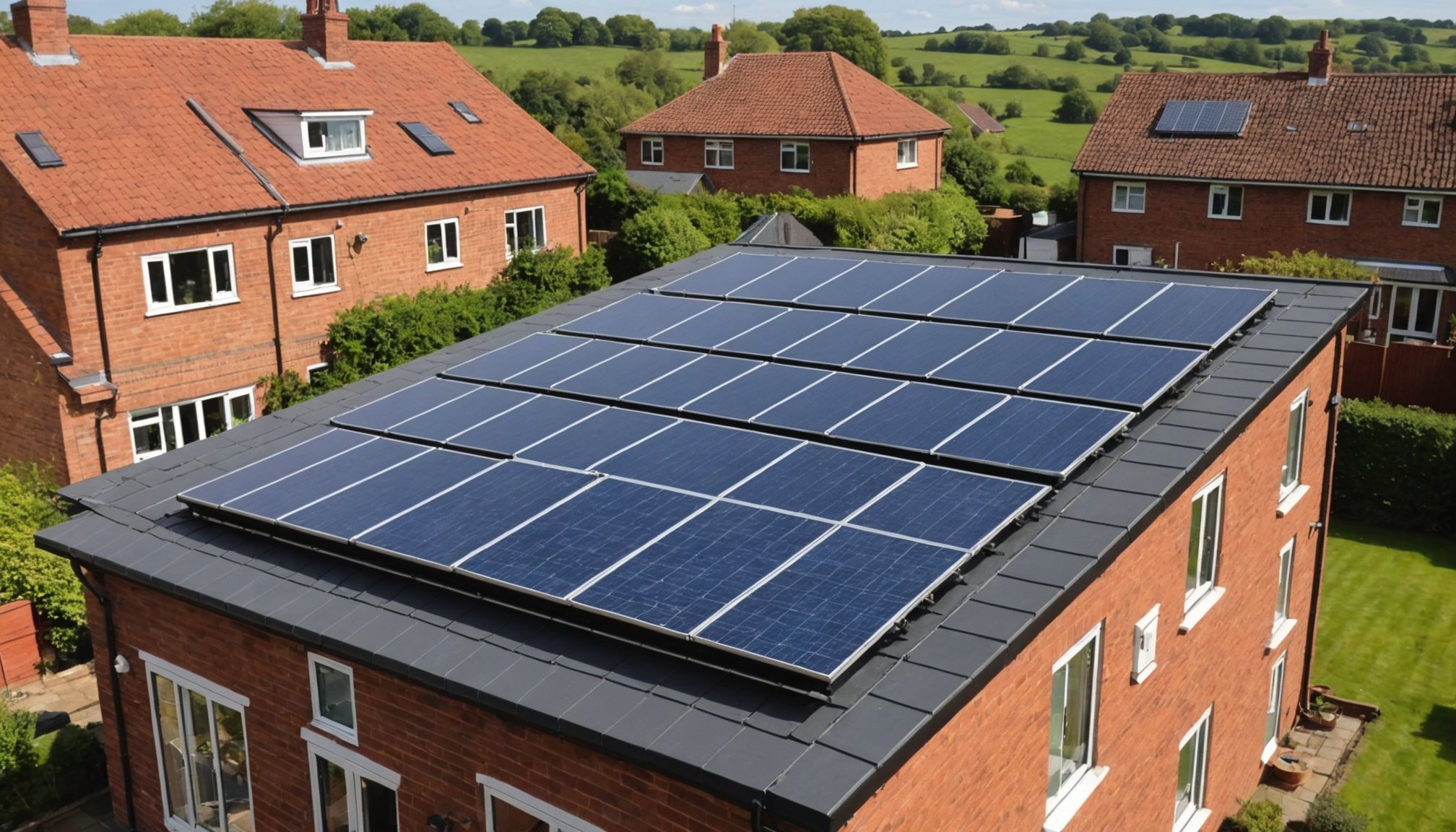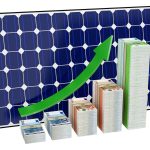Solar thermal systems offer a practical solution for generating hot water in semi-detached homes across the UK. These innovative technologies harness sunlight, effectively reducing energy bills and carbon footprints. Understanding how to maximize these systems can transform your home into a more sustainable haven. Explore essential tips, common challenges, and real-world examples to fully leverage the benefits of solar thermal solutions. Embrace a greener lifestyle and discover how simple changes can lead to significant savings and enhanced energy efficiency. Let's delve into the specifics of optimizing your setup for maximum impact.
Overview of Solar Thermal Systems
Solar thermal systems are a sustainable solution for harnessing solar energy to heat water. These systems primarily consist of solar collectors, a heat transfer system, and a storage tank. The solar collectors, typically mounted on rooftops, absorb sunlight and convert it into thermal energy. This energy is then transferred via a fluid, often water or a glycol mix, to a storage tank where it heats the water.
A lire aussi : Maximizing Solar Power: Ideal Panel Tilt Angles for Peak Efficiency in Northern UK
In the context of solar water heating, these systems are efficient and can significantly reduce energy bills. By using the sun's energy, households can decrease their reliance on conventional energy sources. This not only cuts down on utility costs but also reduces carbon footprints.
For semi-detached homes, solar thermal systems offer distinct advantages. The shared walls in such homes often mean less heat loss, making solar water heating even more effective. Additionally, the rooftop space available is typically adequate for installing the necessary solar collectors. This makes solar thermal systems a practical and cost-effective choice for homeowners looking to embrace renewable energy solutions. The benefits extend beyond just cost savings, contributing to a more sustainable and eco-friendly lifestyle.
Lire également : How do you choose the right type of solar panels for a UK home with a slate roof?
Installation Guide for Solar Thermal Systems
Installing a solar thermal system in a semi-detached home involves several critical steps. Proper solar panel placement is essential for optimal energy efficiency. Panels should ideally face south to maximise sunlight exposure. Consider roof angle and shading from trees or nearby buildings to ensure consistent performance.
Assessing the suitability of your semi-detached home
Before installation, evaluate your home's suitability. Check the structural integrity of the roof to support the weight of solar collectors. Ensure there is enough space for both the solar panels and the storage tank. The shared walls in semi-detached homes can aid in reducing heat loss, enhancing system efficiency.
Step-by-step installation process
- Site Assessment: Evaluate roof space, angle, and sunlight exposure.
- System Design: Plan the layout, including panel placement and piping routes.
- Installation: Secure solar collectors on the roof and connect to the heat transfer system.
- Testing and Commissioning: Ensure all components function correctly and efficiently.
Compliance with UK regulations and standards
Adhering to UK regulations is crucial. Ensure your installation complies with local building codes and standards. Consider hiring a certified installer familiar with these regulations to ensure a smooth and legal installation process. Compliance ensures safety, efficiency, and eligibility for potential government incentives.
Cost-Benefit Analysis
Understanding the cost analysis of solar thermal systems is crucial when considering installation. Initial costs can vary, depending on the system size and complexity. Typically, expenses include purchasing solar collectors, a heat transfer system, and a storage tank, along with installation fees. While this upfront investment might seem significant, it's essential to weigh it against the long-term savings.
Long-term Savings
Once installed, solar thermal systems can lead to substantial savings on energy bills. By reducing reliance on conventional energy sources, households in semi-detached homes can experience a noticeable decrease in monthly utility costs. This financial relief accumulates over time, enhancing the system's value.
Return on Investment and Financial Incentives
Calculating the return on investment (ROI) involves assessing both the initial expenditure and ongoing savings. Typically, homeowners can expect to recoup their investment within several years, thanks to reduced energy costs. Moreover, the UK offers potential financial incentives and grants, further improving ROI. These incentives can lessen the financial burden of installation, making solar thermal systems a more accessible option for those interested in sustainable living.
In summary, while the initial costs might be daunting, the long-term financial benefits and potential incentives make solar thermal systems a sound investment.
Maintenance and Efficiency Optimization
Ensuring the longevity and efficiency of your solar thermal system requires regular attention. Proper maintenance not only extends the system's lifespan but also optimises its performance.
Regular maintenance practices for solar thermal systems
Routine checks are essential. Inspect solar collectors for dirt or debris, as these can reduce efficiency. Clean the panels periodically to ensure maximum sunlight absorption. Additionally, check the heat transfer fluid levels and replace them as needed to maintain optimal heat transfer. Regularly inspect connections and seals for leaks or damage, addressing any issues promptly.
Signs of system inefficiency and troubleshooting
Recognising inefficiency early can prevent costly repairs. Common signs include a noticeable drop in water temperature or increased energy bills. If these occur, inspect the system for blockages or leaks. Ensure the solar collectors are unobstructed and receiving adequate sunlight. If issues persist, consult a professional for a thorough assessment.
How to maximize the efficiency of your solar thermal system
To enhance efficiency, ensure solar collectors are positioned correctly and free from obstructions. Consider upgrading to high-efficiency collectors if your system is older. Regular maintenance and timely troubleshooting are crucial in keeping your system running smoothly and efficiently.
Case Studies and Real-Life Applications
Exploring case studies of solar thermal installations in semi-detached homes provides valuable insights for potential adopters. These real-life applications showcase the tangible benefits and practical aspects of implementing solar thermal systems.
Successful Solar Thermal Installations
One standout success story involves a semi-detached home in Surrey. The homeowners installed a solar thermal system, which led to a 50% reduction in their annual energy bills. This significant saving demonstrates the potential financial benefits. Another case in Manchester highlights the importance of optimal panel placement. By ensuring the collectors faced south, the homeowners maximised energy absorption, resulting in efficient water heating even during the winter months.
Homeowner Experiences
Homeowner testimonials often emphasise the satisfaction derived from reduced utility costs and a smaller carbon footprint. Many report a seamless transition to solar water heating, praising the technology's reliability. One homeowner from Bristol shared that the system's performance exceeded expectations, particularly during peak summer months.
Lessons Learned and Best Practices
From these case studies, several best practices emerge. Proper system design and installation are crucial for maximising efficiency. Regular maintenance, as highlighted by experienced homeowners, ensures the system operates at peak performance. These insights underscore the importance of informed decision-making and ongoing system care.













